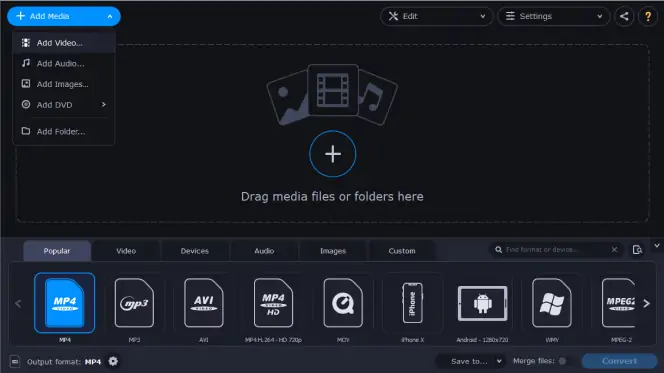We’re all familiar with the concept of codecs. And we’ve probably all run into a problem or two with a codec in the past – a file that works on one computer doesn’t work on another, or works in one app but not another. In fact, codec issues are one of the main reasons we built EditReady.
- Avc Media Player Free Download
- Avc Media Player For Macbook Pro
- Avc Media Player For Mac Os
- Vlc Media Player For Mac
- Windows Media Player Avc
- Part 4: How to Play AVC Files on Mac. If you are interested to know how to open AVC video files on media player for Mac, here is the perfect deal for you. Leawo Blu-ray Player for Mac offers an ultimate solution for users to play all files, ranging from the popular ones like MP4 to rarely seen ones like AVC. This player is totally free.
- Mac users interested in Avc player generally download: MXF4mac Player 2.5 Free MXF4mac Player is a simple Mac application that was mainly designed to help you watch any MXF file that you might have stored on your system.
This post will cover the basics of where codecs live on the Mac, and how you can go about resolving basic codec issues.
Elecard AVC HD Player is designed for high-quality decoding and playback of popular multimedia formats including, among others, AVCHD®, AVC/H.264, MPEG-4 SP/ASP, MPEG-2, MPEG-1 and 3GP. It combines robust functionality of the popular Elecard MPEG Player, innate AVC/H.264 support (without the need to install Elecard AVC PlugIn) and comes with. If you get tired of playing a limited number of formats with QuickTime and want a more comprehensive media player to open AVCHD on Mac, you may be interested in the following app which even with no need to install a codec pack on your machine. VLC is currently one of the most popular substitute of QuickTime for Mac platform.
Traditionally, all the codecs on a Mac were stored in one folder, /Library/QuickTime. If you’ve got an older Mac OS X install and look in that folder, you’ll probably find all sorts of detritus from codecs of the past – DiVX.component, Perian.component, etc. These components are part of the old “QuickTime 7” framework. If you’re working in Final Cut Pro 7 or another older app, these are the only codecs that matter. This is also the only type of codec that can be developed by third parties.
Starting with Mac OS X 10.6 (“Snow Leopard”) Apple introduced a new set of media technologies – AVFoundation, CoreMediaIO, and others. These modern media frameworks don’t use the older components, and instead introduced a separate set of video codecs. You’ll find these in /Library/Video and /System/Library/Video (And often in subfolders from there).
Apple hasn’t opened this technology up to third parties, so only Apple can create these types of codecs. Macs come with some codecs preinstalled (like Apple ProRes) but others are only available as part of the Apple “Pro” apps like Final Cut Pro X. The most important of these, in terms of working with video on a Mac, is probably the AVC Intra codec, since AVC Intra is used by many modern cameras (like many XAVC cameras).
We’ve seen a number of issues related to these modern codecs. First off, some users simply end up with corrupt or missing copies. This can be due to a bad update, or an overly aggressive “cleaner” application on your Mac. If you previously had the codecs and suddenly they’re gone, you can reinstall from the Apple Pro Video Formats download.
As we prepare for the impending release of Mac OS X 10.11 (“El Capitan”), many users will choose to do a full reinstall instead of just updating. This can lead to confusion because codecs will be missing after the update.
If you don’t have the codecs at all, an easy way to get them is by installed the Final Cut Pro X trial. Alternatively, you can find instructions online for installing them manually.
Devices and Mac OS X version
:max_bytes(150000):strip_icc()/avc-files-591b118d5f9b58f4c0dca210.png)
VLC media player requires Mac OS X 10.7.5 or later. It runs on any Mac with a 64-bit Intel processor or an Apple Silicon chip. Previous devices are supported by older releases.
Note that the first generation of Intel-based Macs equipped with Core Solo or Core Duo processors is no longer supported. Please use version 2.0.10 linked below.
If you need help in finding the correct package matching your Mac's processor architecture, please see this official support document by Apple.
Web browser plugin for Mac OS X
Support for NPAPI plugins was removed from all modern web browsers, so VLC's plugin is no longer maintained. The last version is 3.0.4 and can be found here. It will not receive any further updates.
Older versions of Mac OS X and VLC media player
We provide older releases for users who wish to deploy our software on legacy releases of Mac OS X. You can find recommendations for the respective operating system version below. Note that support ended for all releases listed below and hence they won't receive any further updates.
Mac OS X 10.6 Snow Leopard
Use VLC 2.2.8. Get it here.

Mac OS X 10.5 Leopard
Use VLC 2.0.10. Get it for PowerPC or 32bit Intel.
Mac OS X 10.4 Tiger
Avc Media Player Free Download
Mac OS X 10.4.7 or later is required
Use VLC 0.9.10. Get it for PowerPC or Intel.
Avc Media Player For Macbook Pro
Mac OS X 10.3 Panther
QuickTime 6.5.2 or later is required
Use VLC 0.8.6i. Get it for PowerPC.
Mac OS X 10.2 Jaguar
Use VLC 0.8.4a. Get it for PowerPC.
Avc Media Player For Mac Os
Vlc Media Player For Mac
Mac OS X 10.0 Cheetah and 10.1 Puma
Windows Media Player Avc
Use VLC 0.7.0. Get it for PowerPC.
